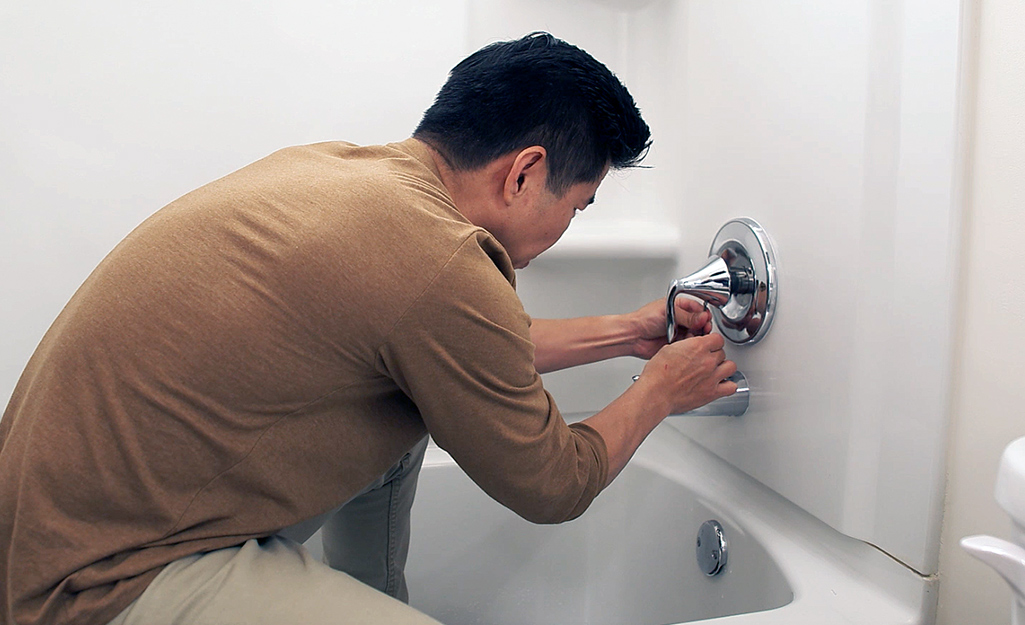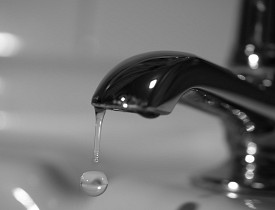Our Importance of Correcting a Malfunctioning Faucet
Our Importance of Correcting a Malfunctioning Faucet
Blog Article
What're your concepts on Why Is It Important To Fix Your Leaking Tap/Faucet??

Trickling taps could feel like a minor trouble, however their influence surpasses just the aggravation of the noise. From wasting water to sustaining unnecessary financial expenses and wellness threats, overlooking a trickling faucet can result in various repercussions. In this post, we'll delve into why it's crucial to resolve this typical household concern quickly and effectively.
Wastefulness of Water
Environmental Impact
Leaking faucets add dramatically to water waste. According to the Epa (EPA), a solitary faucet leaking at one drip per secondly can waste greater than 3,000 gallons of water per year. This not just pressures water resources yet likewise influences environments and wild animals dependent on them.
Financial Costs
Increased Water Expenses
Beyond the ecological impact, trickling faucets can blow up water costs significantly. The accumulated wastage over time translates right into higher utility costs, which might have been avoided with timely repair services.
Prospective Residential Or Commercial Property Damage
Moreover, extended trickling can bring about damage to fixtures and surface areas bordering the faucet. Water buildup can trigger discoloration, corrosion, and even structural concerns if left ignored, causing additional repair expenses.
Wellness Concerns
Mold and Mold Growth
The consistent existence of wetness from a dripping faucet develops a suitable environment for mold and mold growth. These fungis not only compromise interior air high quality however likewise pose health threats, particularly for people with breathing conditions or allergies.
Waterborne Diseases
Stationary water in trickling taps can become a breeding place for germs and other microorganisms, increasing the risk of waterborne conditions. Pollutants such as Legionella microorganisms thrive in stagnant water, possibly causing significant ailments when ingested or inhaled.
DIY vs. Specialist Repair service
Pros and Cons of Do It Yourself Fixing
While some might try to take care of a dripping tap themselves, DIY fixings come with their own set of difficulties. Without proper understanding and tools, DIY efforts can intensify the concern or bring about incomplete repairs, lengthening the problem.
Advantages of Hiring a Specialist Plumber
Hiring a specialist plumber makes sure that the underlying root cause of the dripping faucet is resolved efficiently. Plumbing professionals have the competence and equipment to identify and fix faucet problems successfully, conserving time and minimizing the risk of more damages.
Step-by-Step Overview to Fixing a Dripping Faucet
Tools Required
Before trying to fix a trickling tap, collect the essential devices, including a flexible wrench, screwdrivers, replacement components (such as washers or cartridges), and plumber's tape.
Common Tap Issues and Their Solutions
Determine the sort of tap and the details concern causing the drip. Common problems consist of worn-out washers, corroded shutoff seats, or malfunctioning O-rings. Describe maker guidelines or online tutorials for detailed advice on repairs.
Safety nets
Regular Upkeep Tips
To stop dripping taps, do routine maintenance such as cleansing aerators, inspecting for leaks, and replacing worn-out components promptly. In addition, take into consideration mounting water-saving tools or updating to extra reliable components.
Value of Prompt Repair Works
Attending to leaking faucets as soon as they're noticed protects against additional water waste and potential damages, eventually saving both water and cash over time.
Influence On Residential Property Worth
Understanding of Well-Maintained Residential Property
Maintaining a home in good condition, including dealing with maintenance concerns like trickling faucets, enhances its regarded worth and worth among possible purchasers or tenants.
Impact on Resale Worth
Qualities with well-kept plumbing fixtures, consisting of faucets, command greater resale values in the realty market. Addressing leaking faucets can add to a favorable impact during building evaluations and arrangements.
Environmental Obligation
Specific Contribution to Conservation
Taking obligation for dealing with trickling faucets lines up with broader efforts towards water preservation and environmental sustainability. Every individual's actions collectively make a considerable effect on protecting priceless sources.
Lasting Living Practices
By focusing on punctual repairs and adopting water-saving habits, individuals add to lasting living techniques that profit both existing and future generations.
Final thought
Attending to a trickling tap exceeds simple benefit; it's an important step towards saving water, decreasing financial prices, and securing health and residential or commercial property. Whether via DIY repair services or professional help, acting to deal with leaking taps is a little yet impactful means to promote liable stewardship of resources and add to a healthier, more lasting future.
How to Fix a Leaky Faucet: Step-by-Step Repair Guide
A leaky faucet may seem like a simple annoyance, but if it's not fixed promptly, that leak could cost hundreds to potentially thousands. From water damage to mold, mildew, and high water bills, even a tiny leak can be catastrophic if left unattended. Damage like this can even affect the overall value of your home, so it's important to take the right approach for leaky faucet repair. You may need the help of a plumber in some cases, but we've got a few tips you can try on how to fix a leaky faucet before calling the pros.
Four Faucet Types
When you're learning how to fix a leaky faucet, the first step is knowing what kind of faucet you're working with! There are four common types.
Cartridge Faucets
Cartridge faucets come in one- or two-handled varieties. In one-handled cartridge faucets, hot and cold water combines in a single cartridge. In the two-handled versions, hot and cold water are controlled separately and mixed in the faucet.
Ball Faucets
Ball faucets have a single lever you push up and down to adjust the pressure and rotate to change the temperature. A slotted metal ball controls the amount of water allowed into the spout.
Compression Washer Faucets
They're the oldest type of faucet, but they're still used in many homes — especially older ones. Compression faucets have two separate handles that, when turned, raise or lower the washer that seals a water valve. This valve stops water from flowing through the faucet when it is turned off.
Disc Faucets
Disc faucets rarely need to be repaired due to their maintenance-free design. The water flow is controlled by two discs — the upper one raises and lowers against a fixed lower disc, creating a watertight seal. If your disc faucet starts leaking, you may need to replace the seals or clean residue buildup from the inlets.
Fixing a Leaky Faucet
Step 1: Turn Off the Water
Whether you're learning how to fix a leaky bathtub faucet or how to fix a leaky kitchen faucet, always turn off the water supply to your working area when you're fixing a leak. The last thing you want is a flood added to your list of things to fix.
Look for the shutoff valves below your sink or around the tub and turn them clockwise to stop the water flow. If your faucet doesn't have shutoff valves, you may need to turn off the water for the whole house. Check to make sure it's off by turning the faucet on. If nothing comes out, you're ready to start the repair.
Step 2: Take Apart the Faucet
How you disassemble your faucet depends on the type of fixture you have. You can use a flathead screwdriver to remove the caps on top of the handle or handles for cartridge and compression faucets. Inside, you should see handle screws. Unscrew these with a screwdriver to remove the handle.
Disc- and ball-style faucets will typically have an inlet screw near the handle, and removing that will reveal the interior of the faucet.
Detach the Valve Stem
For cartridge- and compression-style faucets, you'll see the inner valve stem or cartridge once you remove the faucet handles. If you have a compression faucet, unscrew the brass valve stem. If you have a cartridge faucet, pull out the cartridge. If your cartridge has been in place for a while, it may require some tools or extra force to remove it due to mineral deposits.
Examine and Replace Parts
Once you've removed the parts, check them out to confirm what needs to be replaced. You may see corroded rubber washers, O-rings, stems, or cartridges. On a ball-style faucet, check the seats and springs for damage.
If you need to repair a leaky disc faucet, check the inlet and seals on the lower disc.
Once you determine what parts must be replaced, visit your local hardware store. Bring the damaged parts with you to ensure you can purchase the correct components to replace them.
Clean Valves and Faucet Cavity
If you've removed a stem or cartridge, you may notice mineral buildup in the faucet's threads. Use white vinegar to clean the valve seat by soaking it for a few minutes, then scrub it away with a soft toothbrush and rinse with warm water. You can also clean the interior of the faucet in the same way.
Reassemble the Faucet
Once your faucet is cleaned and the required parts have been replaced, it's time to reassemble it. Put the pieces back together and slowly turn the water supply back on. Doing this slowly is crucial because too much initial water pressure can damage the new hardware you've just installed.
https://homewarranty.firstam.com/blog/how-to-fix-leaky-faucet

I was made aware of that write-up on Should I Repair or Replace a Leaky Faucet? through a pal on a different web property. So long as you liked our post if you please make sure you remember to pass it around. We truly appreciate your readership.
Report this page